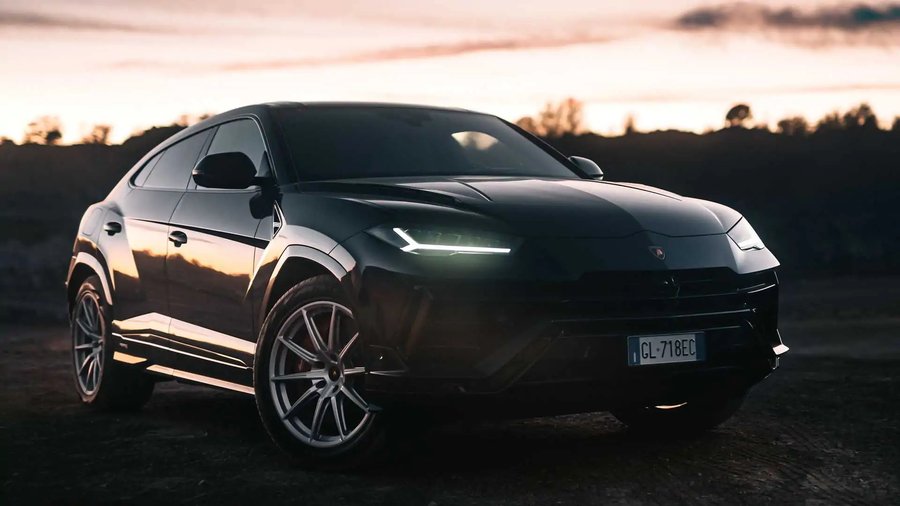Lamborghini Urus to go hybrid-only in 2024, electric in 2029

The Lamborghini Urus will go hybrid-only from next year ahead of the launch of an all-electric second-generation version in 2029.
The twin-turbo 4.0-litre V8-based plug-in Urus will be the second plug-in hybrid Lamborghini after the launch of the Aventador-replacing Revuelto, company CEO Stephan Winkelmann confirmed to Autocar.
The hybrid will replace the pure-petrol V8 Urus in the line-up towards the end of 2024 and stay on sale until close to the end of the decade, when an electric Urus will replace it in a second generation.
That electric Urus will follow the 2028 launch of the Italian firm’s first EV, which will be a fourth model line with no predecessor. This car will take the form of a high-riding 2+2 GT, a car with “more ground clearance", and will be "an innovative way of doing a GT”.
“It will be about sustainability, have better visibility and have the design of a very sexy car, but still immediately recognisable as a Lamborghini,” said Winkelmann. It will also feature “high-performance batteries that nobody else has and will be unique in the market.”
Work on this model remains at the design phase and Lamborghini is working “on the boundaries of the dream versus what we can actually do”, according to Winkelmann.
Lamborghini needs to wait until 2028 to launch it, because the intervening years will be used to introduce various derivatives of the new Revuelto, the 2024 successor to the Lamborghini Huracán and the hybrid Urus. “We have to grow the size of the company and this takes time,” said Winkelmann.
This time will also be used to reconfigure the Sant’Agata factory, where the Revuelto and Huracán replacement will be built on the same line (the first time it has built these two ranges on the same line), and in time the two electric cars will be made on another production line. The first two years of Revuelto production have already sold out.
Lamborghini isn’t committing to any future electric cars beyond these two of its “daily drivers” and as yet has no plans to launch an electric supercar in either its Revuelto or Huracán-replacing lineages because it believes it already has the needs of the supercar market covered.
The replacement for the Huracán will come next year, Winkelmann confirmed, as a car with a new name and a plug-in hybrid powertrain that’s set to be a development of the Urus hybrid’s.
However, Winkelmann believes that future legislation will make it “almost impossible” to keep internal-combustion-engined cars on sale even if they are technically within the rules.
“I strongly believe that after 2035, legislation will be so high for ICEs that it will be almost impossible for the ones with high displacement like ours to be compliant,” he said. “You see this now with EU7 but also developments of EU6. It is very costly and getting impossible to achieve. To develop ICE is incredibly costly.”
The firm develops its models to meet the strictest homologation legislation around emissions, and the Clean Air Act in California is typically the strictest. With the ban on the sale of non-EVs after 2035, Winkelmann inferred that this is the way Lamborghini will have to go. He said: “You go with the most difficult legislation, which is the US, and is really California. Other states adopt California’s rules – typically big cities and that’s where we sell cars.
“Even if it [legislation] is not banning EVs, taxation will be a killing factor. Then mega-cities are talking of abolishing non-EVs before 2035 regardless."
The recent development of synthetic fuels is “more about keeping alive the current car parc, rather than convert” future models to be fuelled by them, said Winkelmman, when asked on the potential for them to allow internal combustion engines to live on.
However, Lamborghini is in no rush to commit to an electric future for its supercars, because new generations won’t appear for “eight or nine years, which means we won’t have to decide for another three-and-a-half to four years”. He added: “This is an advantage as the picture will be clearer then [around the success or otherwise of electric supercars]. With hybrid [supercars], it’s a non-issue. Nobody expected them to be accepted so quickly.”
Speaking more broadly on electric supercars, Winkelmann said it is “up to us to prove that full-electric supercars can be as emotional as ICEs. We’re working on it, but it is on us.” When Lamborghini has cracked this powertrain technology, the firm will “need to show it earlier” than the production car it will appear in “as it will need to be digested” by the market. At present, Winkelmann said he has “no answer for the sound” of electric cars.
With any new Lamborghini, it is “a simple equation: more performance and more sustainability than the generation before”. Whatever the power source, Winkelmann said future Lamborghinis will be built to the firm’s mantra of “building dream cars that over-exceed expectations”.
As for a Lamborghini hypercar, Winkelmann said it is something the brand would like to do but budget and space in the range are limiting factors at the moment.
Winkelmann would be keen for the firm to do an off-road Sterrato version of one its models in the future, off the back of the success of a Huracán-based model, but the current Sterrato will be the final version of the current car.
Nouvelles connexes


